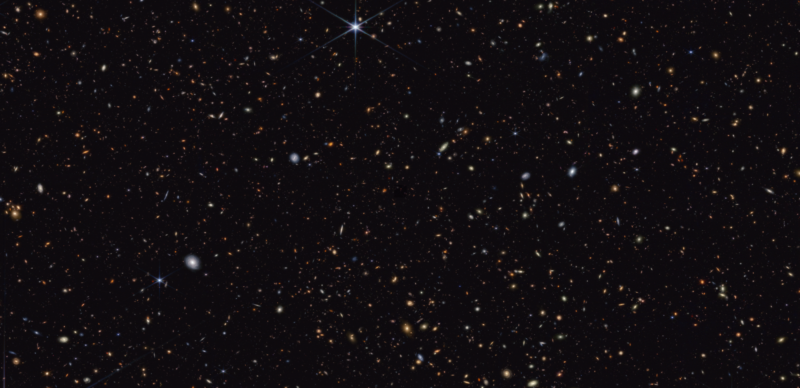
Enlarge / This image from Webb’s NIRCam (Near-Infrared Camera) instrument shows a portion of the GOODS-North field of galaxies.
NASA, ESA, CSA, STScI, et. al.
Welcome to the Daily Telescope. There is a little too much darkness in this world and not enough light, a little too much pseudoscience and not enough science. We’ll let other publications offer you a daily horoscope. At Ars Technica, we’re going to take a different route, finding inspiration from very real images of a universe that is filled with stars and wonder.
Good morning. It’s March 5, and today’s image comes from the James Webb Space Telescope.
It’s a new deep-field image from the infrared space telescope, showcasing a portion of the “Great Observatories Origins Deep Survey” region of space that has previously been observed by other space telescopes, including Hubble and Chandra. Almost everything in this image that doesn’t have lines emanating from it is a galaxy.
Such deep field images are poetic in that they’re just showing a tiny fraction of a sky—the width of this image is significantly less than a single degree of the night sky—and yet they reveal a universe teeming with galaxies. We live in a cosmos that is almost incomprehensibly large.
If you click through to the Webb telescope site you will find an annotated image that highlights a galaxy in the far lower-right corner. It is galaxy GN-z11, seen at a time just 430 million years after the Big Bang.
Source: NASA, ESA, CSA, STScI, et. al.
Do you want to submit a photo for the Daily Telescope? Reach out and say hello.